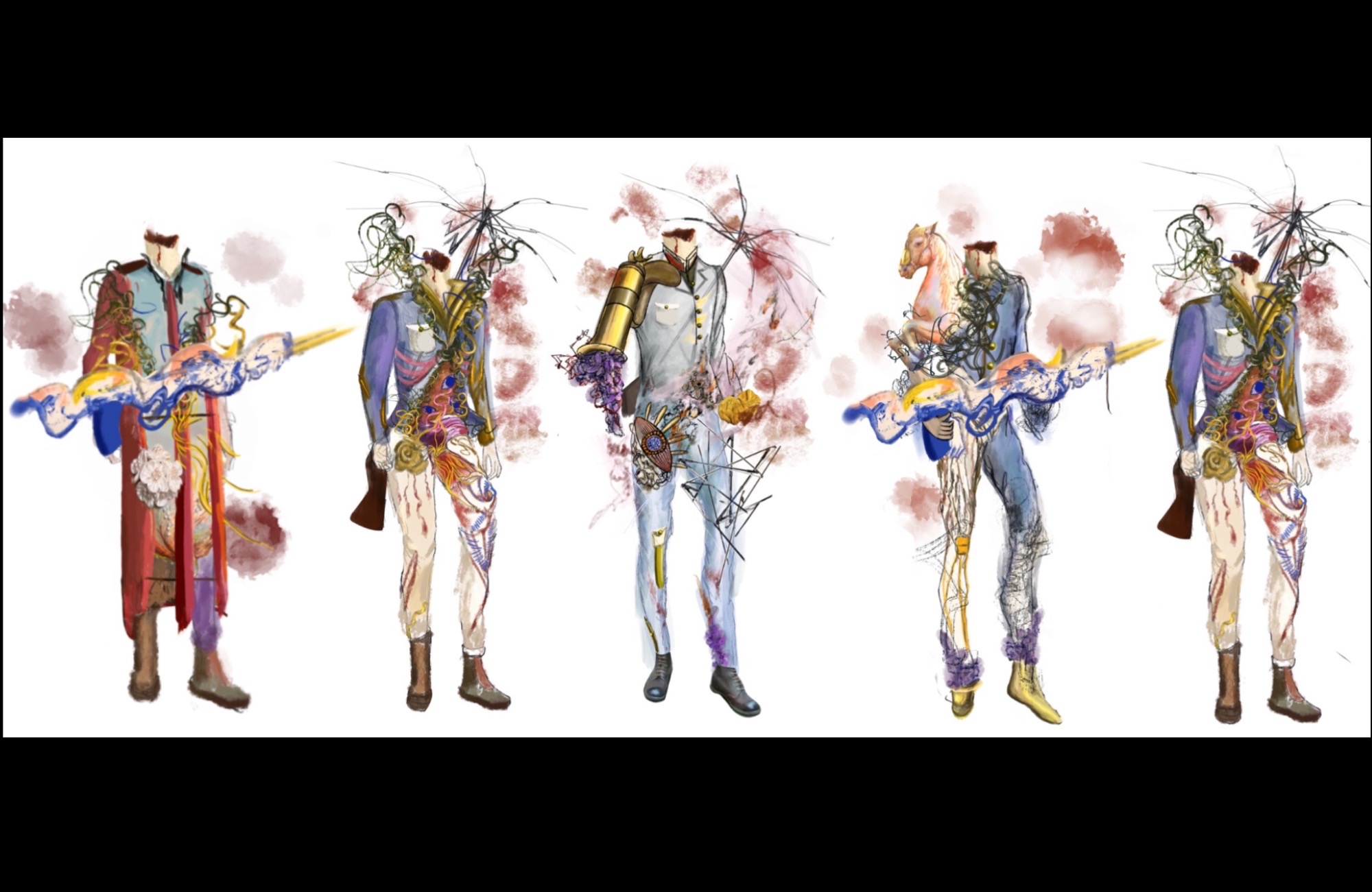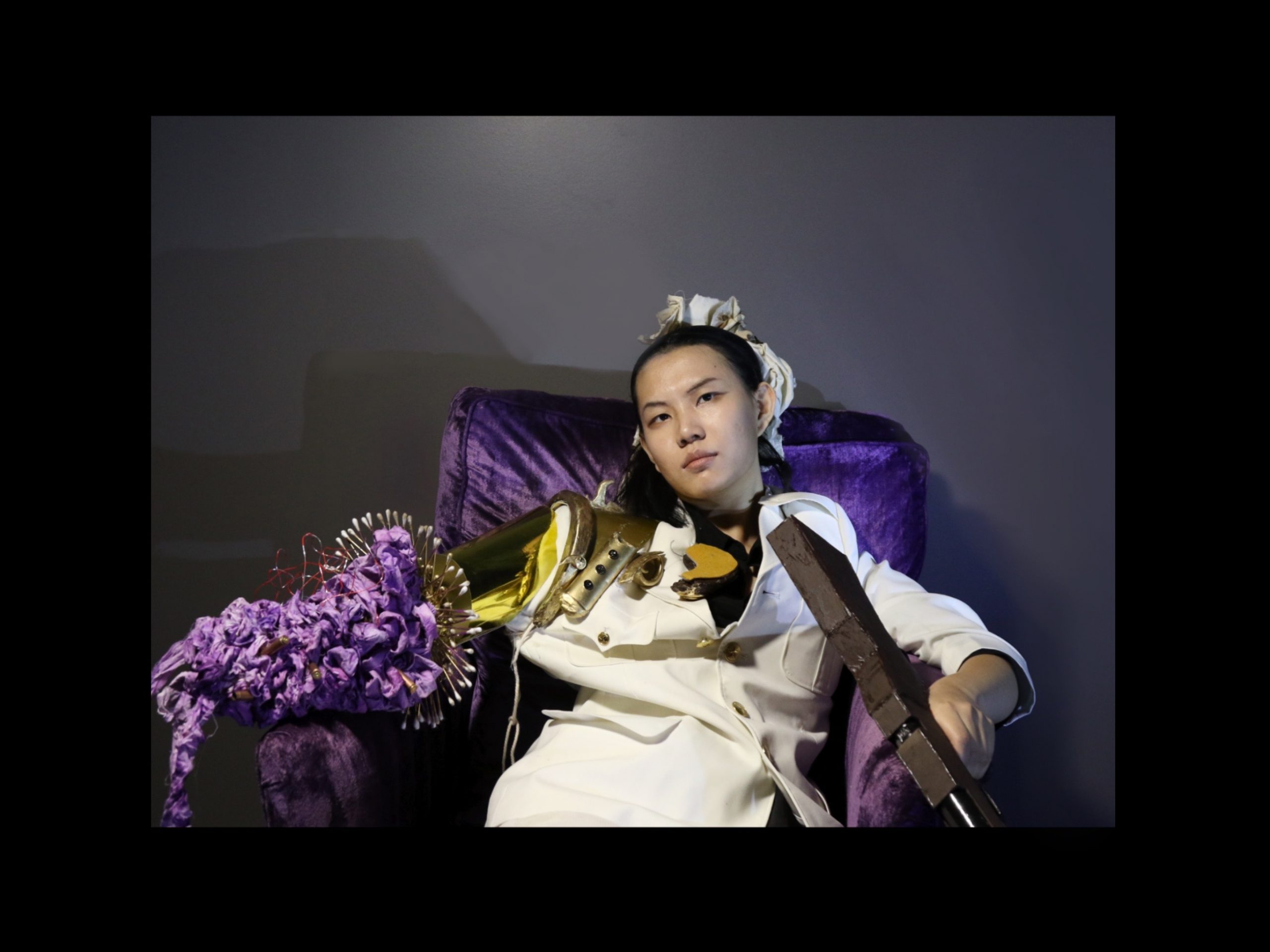The inspiration for this project comes from the combination of surrealism and World War I. During the research process, I was inspired by surrealism’s focus on political issues and responded to the “Blank Paper Movement” in China caused by the epidemic at that time. Through poetry and painting, I depicted the bloody, dreamlike, and heroic scenes of war in surrealism, hoping to awaken the audience’s attention to not only hot weapons warfare but also the political war hidden under the surface of prosperity. Finally, based on this, I created this wearable installation.
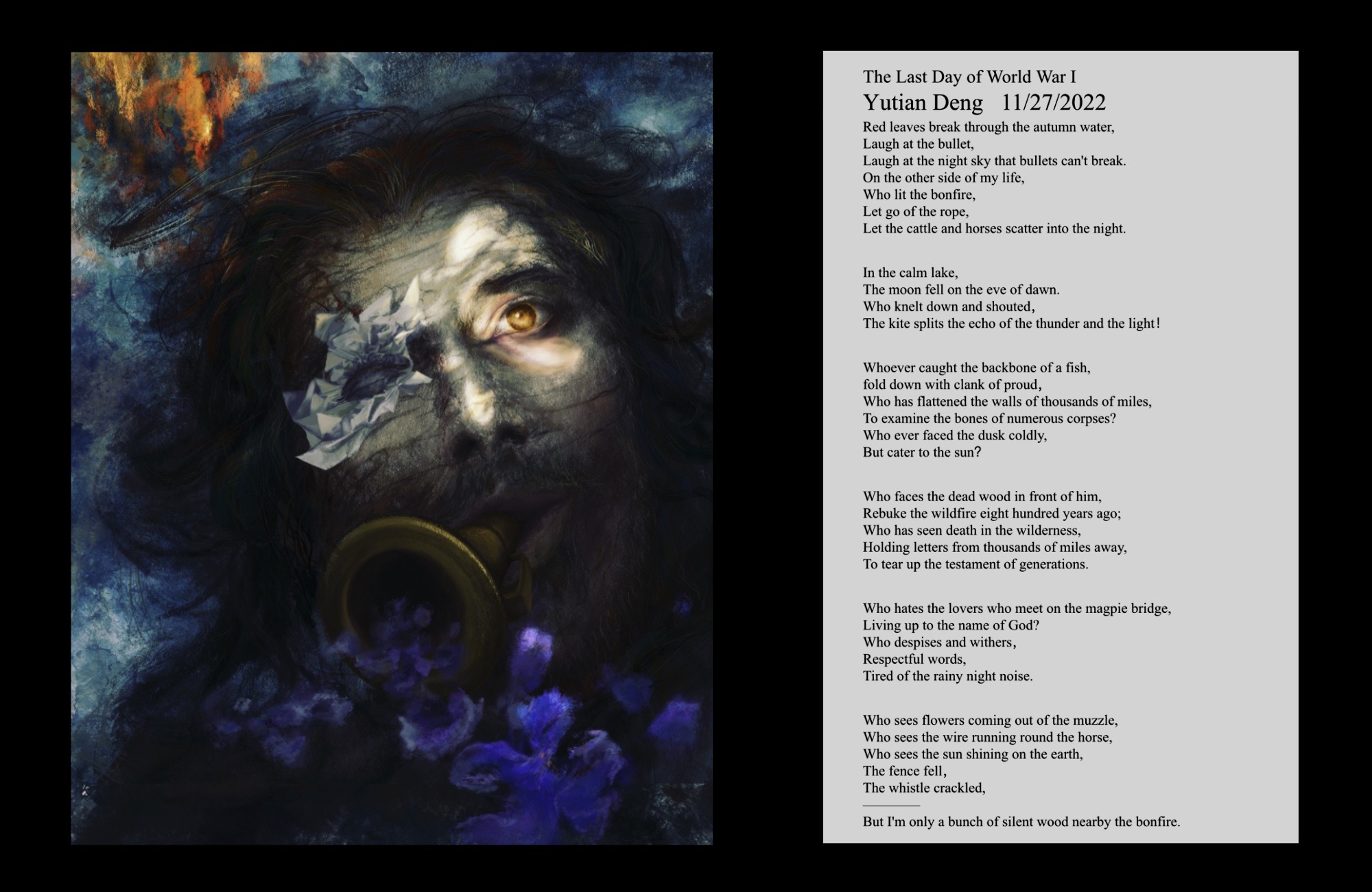
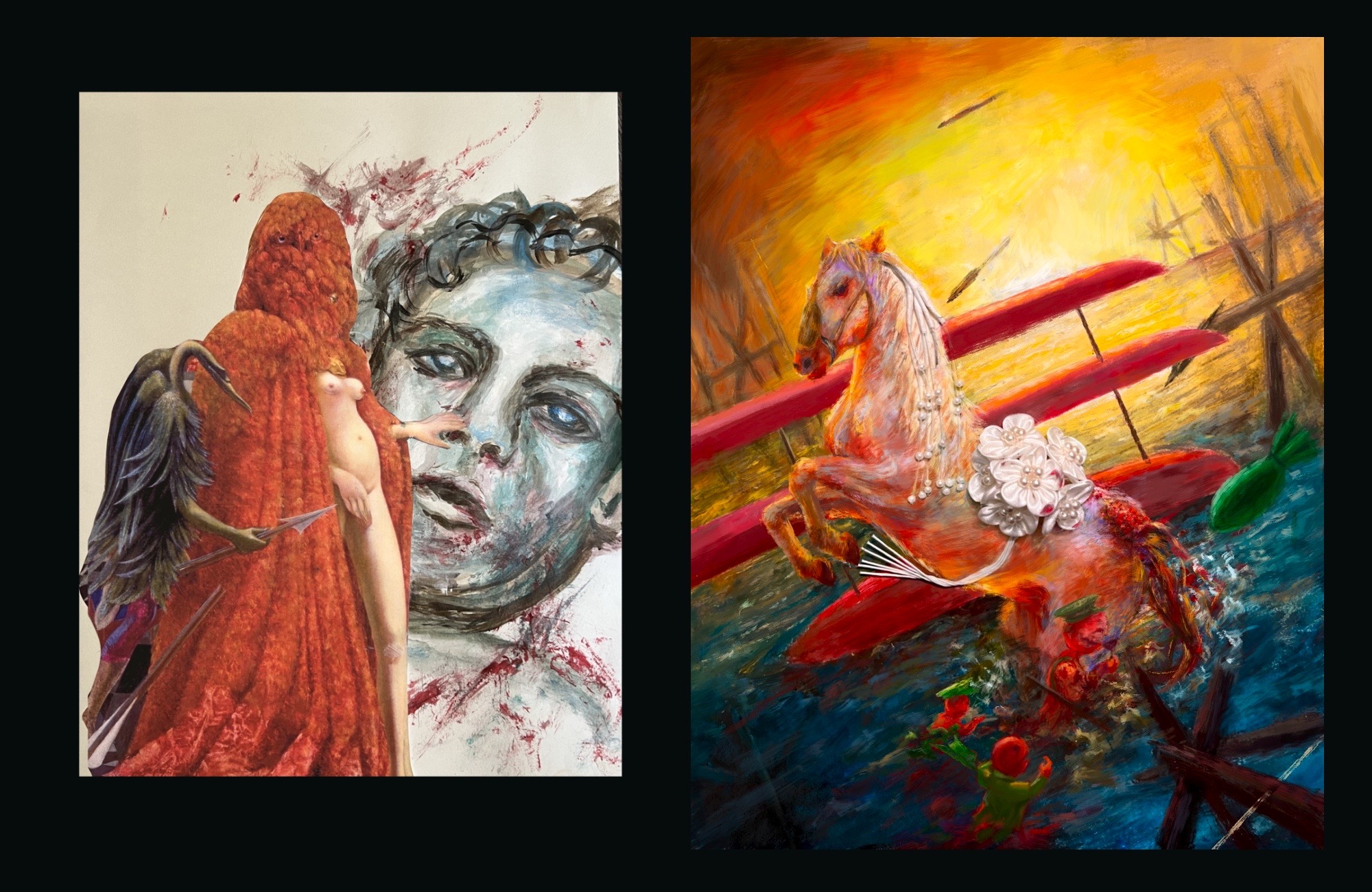
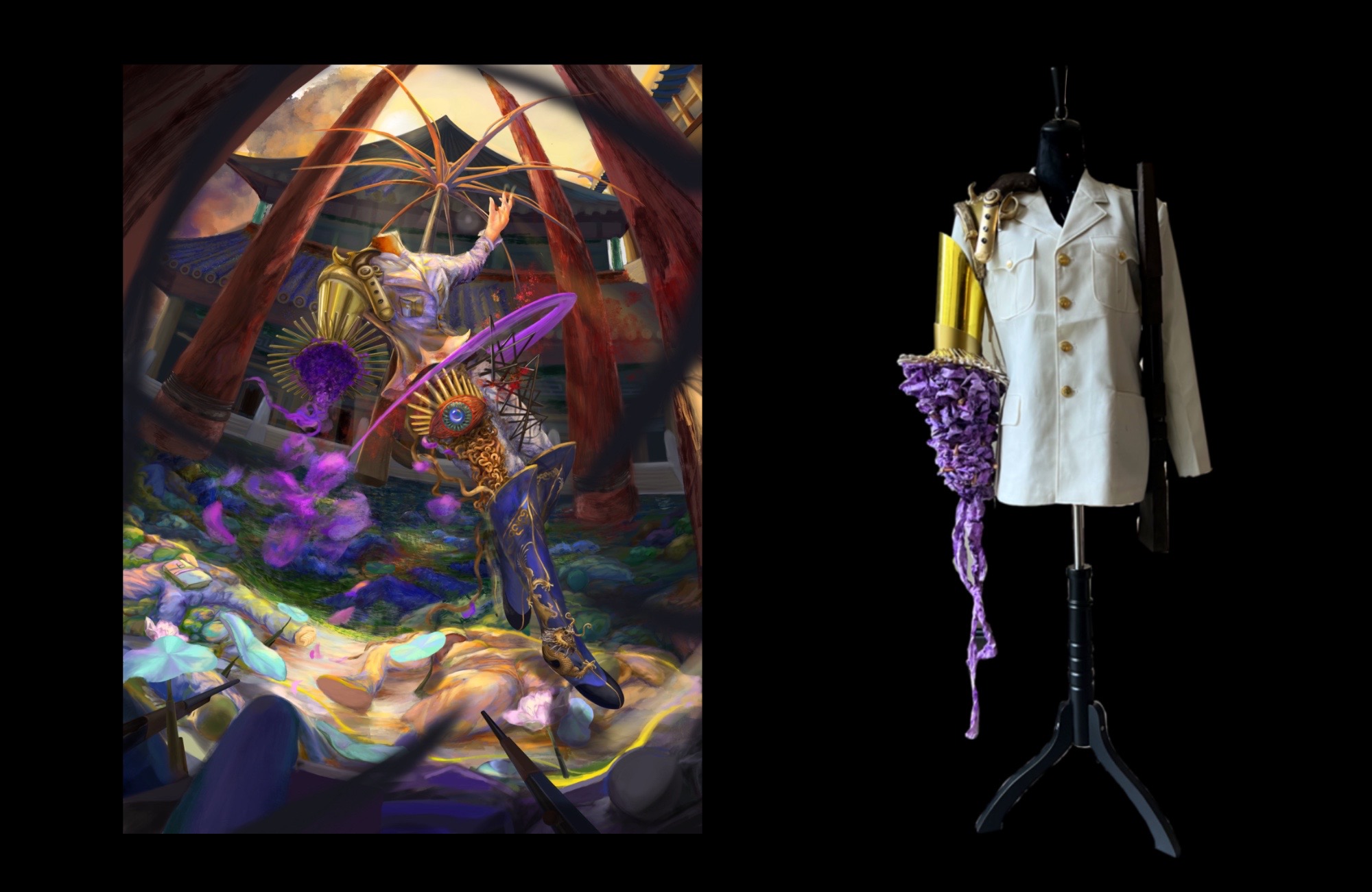
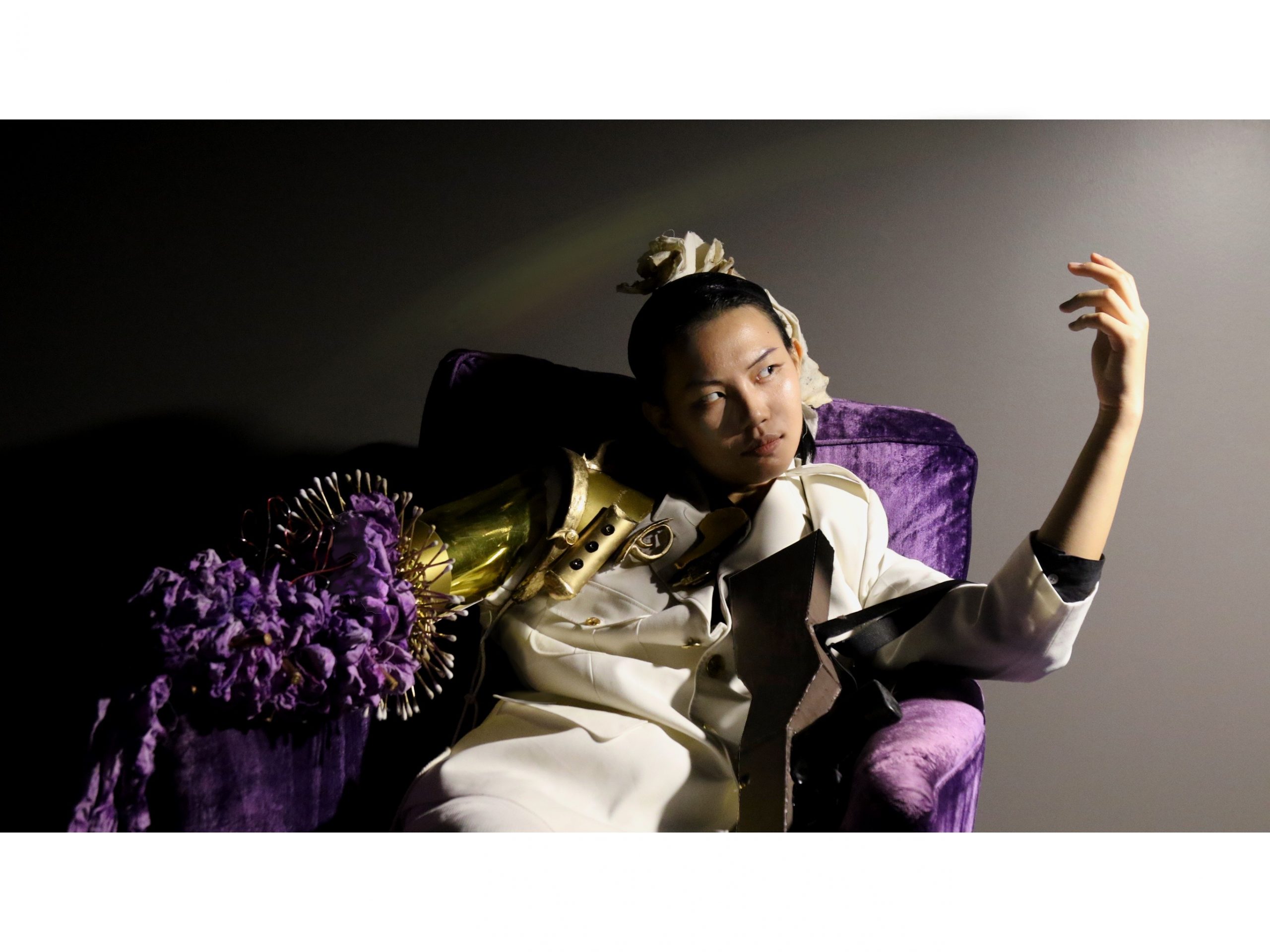
I consider this as my first progress after entering SAIC – I have transformed abstract concepts into concrete expressions by integrating interests beyond the art field with art. This is what I have been expecting for a long time, as I have previously only focused on hollow humanities such as literature and philosophy. Clothing as a form has given these ideas practical meaning.
I began to learn about surrealism in my FYS class in the first semester, which led to the influence of artists such as Andre Breton and Dali. They inspired me in two ways by engaging in politics through literature, painting, sculpture, and other forms of art.
Firstly, about artists participating in politics. As a student from a politically sensitive country, I have always been warned not to participate in politics unless I want to visit the police station. However, the Surrealist artists made me realize that art can be a means of intervening in politics, in a more subtle and tactful way compared to protests, and therefore, it can be more sustainable.
The second inspiration is about how to choose art forms and which ones to choose. The research process in the introduction class gave me the opportunity to start all of this. I collected texts and images of surrealism and World War I. After watching the movie “All Quiet on the Western Front”, I seemed to immerse myself in the role of a World War I soldier. For a period of time, I faced the warm sun but my cheeks trembled, and I couldn’t resist crying because the transparent sky trapped me in a cold and icy blue atmosphere. This inspired me to express emotions of sadness, despair, fear, and bravery through painting, which ultimately became the cornerstone of my transition from 2D to 3D works.
The wearability requirements of this installation have added many limitations to my production process. I had to consider the weight of materials and how to avoid adding too many restrictions to mobility. While ensuring the aesthetic restoration of the design effect, I also had to consider the engineering connection between materials. However, solving these problems brought me back from the excitement of solely relying on art to express political ideas, and made me realize that clothing should have an aesthetic function, but its essence is human-centered design. I will further develop its comfort in future studies.
